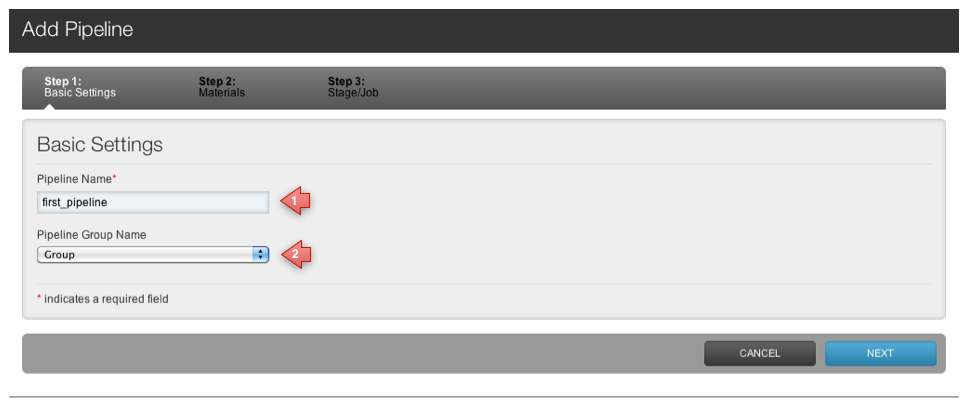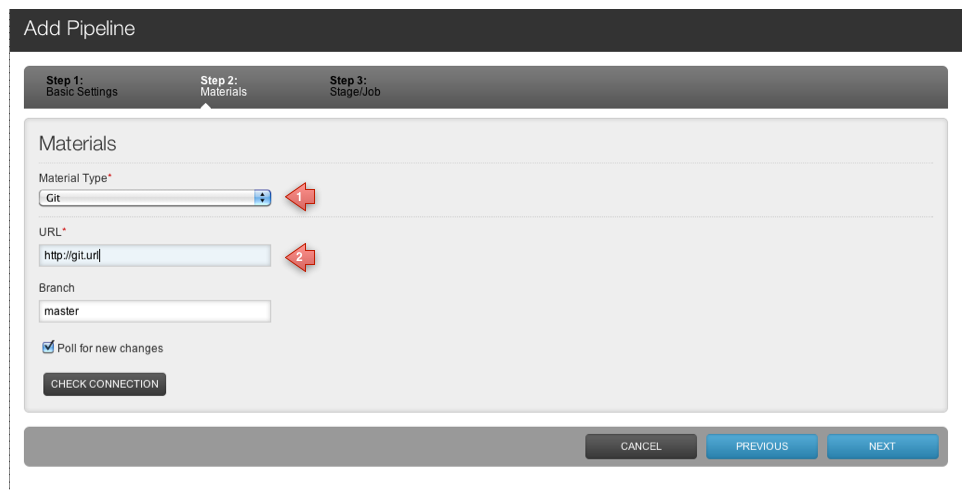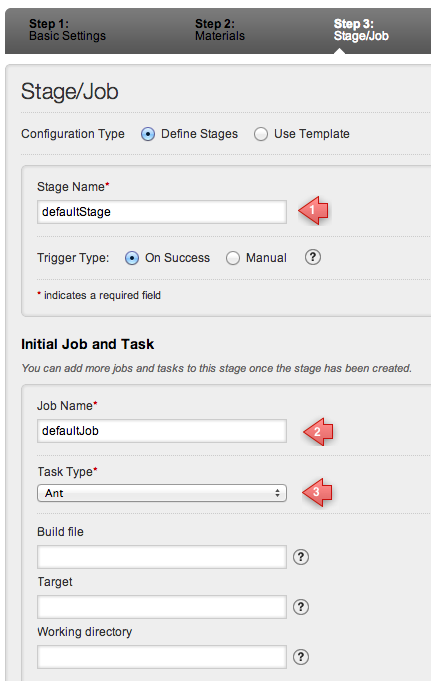- Home
- Download as PDF
- Contribute
- Introduction
- 1. Concepts In Go
- 2. Go Tour
- 3. Installing Go
-
4.
Configuration
- 4.1. Setup a New Pipeline
- 4.2. Managing Pipelines
- 4.3. Managing Dependencies
- 4.4. Managing Agents
- 4.5. Managing Environments
- 4.6. Pipeline Labelling
- 4.7. Pipeline Scheduling
- 4.8. Parameterize a Pipeline
- 4.9. Customize a Pipeline Label
- 4.10. Clone a Pipeline
- 4.11. Lock a Pipeline
- 4.12. Add Material to Existing Pipeline
- 4.13. Add Stage to Existing Pipeline
- 4.14. Add job to Existing Stage
- 4.15. Add task to Existing Job
- 4.16. Pipeline Templates
- 4.17. Choose When a Stage Runs
- 4.18. Timer Trigger
- 4.19. Job Timeout
- 4.20. Managing Users
- 4.21. Authentication
- 4.22. Authorizing Users
- 4.23. Delegating Group Administration
- 4.24. Pipeline Group Administration
- 4.25. Publish Reports and Artifacts
- 4.26. Managing Artifacts and Reports
- 4.27. Auto Delete Artifacts
- 4.28. UI Testing
- 4.29. Mailhost Information
- 4.30. Notifications
- 4.31. TFS Material configuration
- 4.32. Reference
- 4.33. Schema
-
5.
Advanced Usage
- 5.1. Auto Register a Remote Agent
- 5.2. Spawn multiple instances of a Job
- 5.3. Multiple Agents on One Machine
- 5.4. Clean on Task Cancel
- 5.5. Conditional Task Execution
- 5.6. Trigger With Options
- 5.7. Fan In
- 5.8. Properties
- 5.9. Compare Builds
- 5.10. Graphs
- 5.11. Command Repository
- 5.12. Backup Go Server
- 5.13. Other Config Options
- 6. Integrating Go With Other Tools
- 7. Go Api
- 8. Extension Points Of Go
-
9.
FAQ/Troubleshooting
- 9.1. Ordering of Pipelines
- 9.2. Historical Configuration
- 9.3. Concurrent Modifications to Config
- 9.4. Why the Build is Broken?
- 9.5. See artifacts as sub-tabs
- 9.6. Save Properties for a Build
- 9.7. Using Environment variables
- 9.8. Deploy to an environment
- 9.9. See changes in new binary
- 9.10. Run Tests against new Builds
- 9.11. Check What's Deployed
- 9.12. Deploy a Specific Build
- 9.13. Clone/Copy an Existing Agents
- 9.14. OAuth Overview
- 9.15. What is OAuth?
- 9.16. What is OpenSocial?
- 9.17. How do I re-run jobs?
- 9.18. Go unable to poll for changes
- 9.19. Artifact integrity verification
- 9.20. Email Notifications
- 9.21. Running out of Disk Space
- 10. Beta features
- 11. Release History
- Published using GitBook
Setup a new pipeline
New Pipeline Wizard
After you've entered your license information, clicking on the Pipelines tab will take you to the "Add new pipeline" page. You can also add a pipeline by navigating to the Admin page and clicking on the "Create a new pipeline within a group" link. You can create a pipeline in 3 steps.
Step 1: Basic Settings

- Fill in the pipeline name
- Fill in the pipeline group
Step 2: Material

Choose the material type. The material can be your Source Control Management (SCM or version control) repository or another pipeline or a package repository (e.g. yum). Currently Go supports the following SCMs:
- Subversion
- Mercurial
- Git
- Team Foundation Server.
- Perforce
and the package repository and material plugins.
Fill in settings specific to the material type.
Step 3: Stage and Job

A pipeline contains one or more stages. Define the first stage of your pipeline
- Fill in the Stage name.
- Fill in the Job name.
- Fill in the task type and the command for the task.
- If you use Ant, NAnt or Rake for scripting, Go provides convenience wrappers for these tools. To use any other scripting tool (e.g: Maven, msbuild, etc.), choose the "More..." option to use the command repository or specify the command line syntax for that tool.
See the Managing pipelines documentation for editing these settings following the creation of your pipeline.
Initial task settings
Ant
The Ant task allows you to run an ant script. Go does not include Ant and so you must ensure that it is already on the command path. By default it will use build.xml in the agent's working directory as the build file. If you want to customize the build file or build target, click the edit link to change the defaults.
For this option to work, Ant needs to be installed on the Go Agent(s) and the go user should be able to execute it.
NAnt
The NAnt task allows you to run a NAnt script. Go does not include NAnt and so you must ensure that it is already on the command path. By default it will use default.build as build file in the agent's working directory. If you want to customize the build file or build target, click the edit link to change the defaults.
For this option to work, NAnt needs to be installed on the Go Agent(s) and the go user should be able to execute it.
Rake
The Rake task allows you to run a ruby rake build. Go does not include ruby or rake and so you must ensure that it is correctly installed on the agents. Go will assume the standard rakefile exists in the working directory of the agent.
For this option to work, Rake needs to be installed on the Go Agent(s) and the go user should be able to execute it.
More...
In addition to the above tasks, Go allows you to run anything on the command line. You can use the command repository to help you choose the command. Alternately you can specify a command on your own.
You can see the complete configuration reference here.